feb 4, 2023
Aprajita Jain
Aprajita Jain is a dedicated professional with a background in marketing and business development. Currently serving as a Chief Brand Marketing Evangelist at Google, she is known for her strategic thinking and innovative approach to driving business growth. Aprajita has a proven track record of developing and implementing successful marketing strategies that drive customer acquisition and retention. Her passion for marketing and her commitment to excellence make her a valuable asset to any organization.
One Line Life Lessons from Aprajita
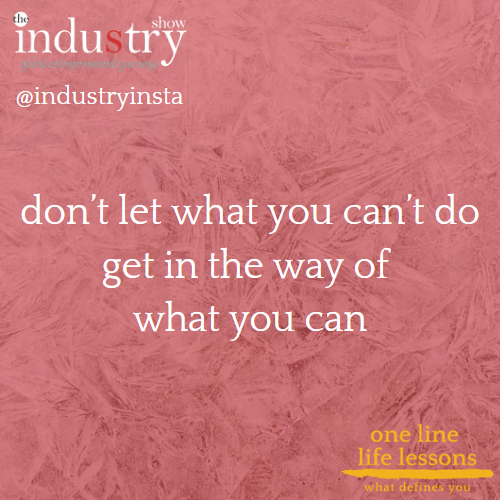
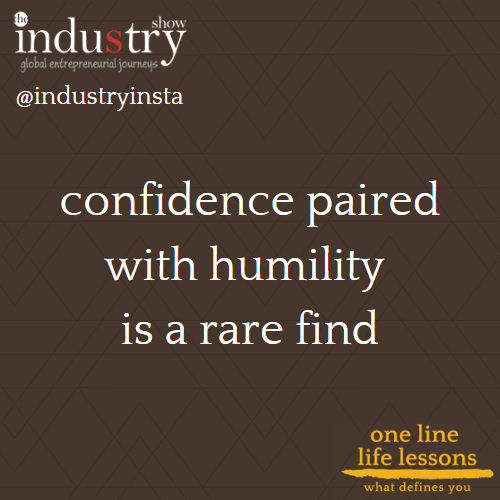
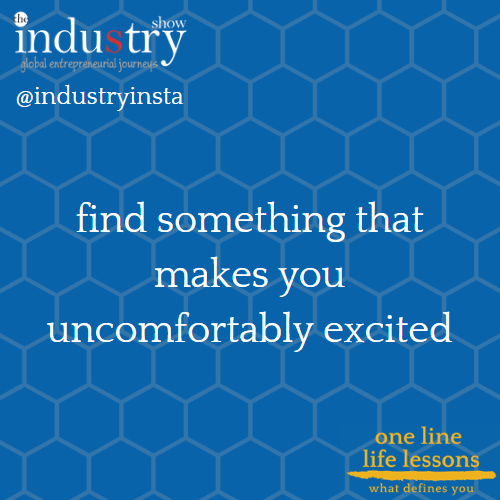
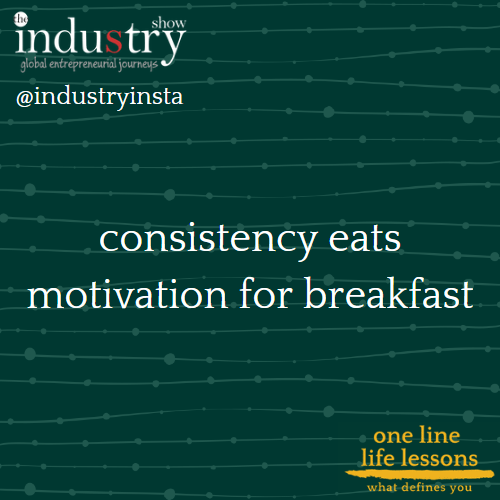
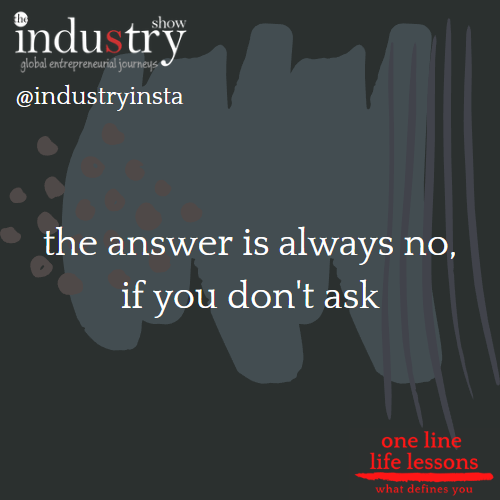
Episode Highlights
- (0:00:00) – Nitin Bajaj welcomes Aprajita Jain to the show
- (0:00:14) – Aprajita is a mix of three distinct cultures
- (0:02:15) – Your role at Google is chief brand marketing evangelist
- (0:05:44) – An interesting takeaway from one of these meetings you had. There is a company that manufactures toys, large global brand
- (0:10:17) – Google’s challenge is to push clients out of their comfort zone with innovative ideas
- (0:14:03) – As a leader who helps drive for Fortune 500 companies, what’s the most exciting thing
- (0:16:20) – Two moments in your career where failure turned into success
- (0:19:41) – As we get older, we introspect more about our lives
- (0:25:15) – Aprajita, thank you so much for taking time off your busy schedule
Show Transcript
Transcript - Full Episode
Ntin Bajaj: (0:00:00) – Hey everyone, welcome to the industry show. I’m your host, Nitin Bajaj. And joining me today is Aprajita Jain. Aprajita, welcome on the show.
Aprajita Jain: (0:00:09) – Thank you so much, Nitin. Pleasure to be here.
Ntin Bajaj: (0:00:12) – Pleasure is all ours. Let’s start with who is Aprajita?
Aprajita Jain: (0:00:17) – That’s a loaded question. There is a lot that makes me me, but since you have given me 1 minute, let me describe type the back end of what makes me me. That will hopefully help you understand the rest of it. So I’m what you would typically describe as a third culture, individual, or tcIs, in abbreviation speak. So these are basically people who were raised in a culture other than their parents, and then they lived in a country which had a different culture. And then maybe in life they end up in yet another country where they pick up more cultural traits from. And that is the case with me. My parents are obviously indian. They moved to Germany in the mid to late seventy s. And then I grew up in Germany, but then many years later I moved to the US. It’s been 18 years now. So I’m a little bit of a mix of all these cultures, and honestly, I wouldn’t have it any other way. I feel these three cultures, or I should maybe say two. I’m still trying to figure out what the american culture really means. Mix of many immigrants, especially in the Bay Area where I live. But these two cultures, the indian and the german culture, have really formed who I am, and they’re quite different. And oftentimes at ods. But just having had the choice to pick traits from both with every decision that I make in life has been such a delight for me and has very much shaped me. Something I’m very, very grateful for. And it makes me uniquely me.
Ntin Bajaj: (0:01:48) – It does. And the ability and the experience of having lived in three very distinct cultures. And as much as I am still trying to figure out what the true american culture is, it is unique. And to have that experience of three very distinct cultures does definitely bring a lot of uniqueness with it. So another unique thing you do that I would love to unpack is your role at Google. So tell us a bit more about it and also what your day looks like. And more importantly for me, what is the impact that you’re able to drive?
Aprajita Jain: (0:02:35) – Yeah, so my role, the official title is chief brand marketing evangelist. Now that is a very interesting title to have. It has nothing to do with religion. Even though it sounds like I’m evangelizing something here, technically I am. But internally I’m often referred to as Google’s CMO whisperer. So my team’s mission is to really bring our clients C suite executives. So the CEO, CMO, chief digital officer, chief financial officer, sometimes too together in a room at Google, and then on the other end, have Google’s experts come together to have a provocative conversation that really accelerates our partnership. It is not so much about selling a product or having them spend more with us eventually. Yeah, obviously every corporation has that as an end goal, but really, the mission for me personally is to provoke bold action by sharing thought leadership on brand building strategies, specifically in the digital age. Right. A lot of these large companies that I work with, they are very, very good at building their brands and growing them and maintaining them in the offline world, like television, audio, print. But we know that viewership has moved to digital over the last 1520 years. So how can we mitigate the loss of some of that brand building offline and make up for that with digital tools? So a lot of my research, a lot of my discussions are focused on building the brand digitally. And the goal is to really help these brands along their digital transformation journey. I know this is a very loaded, sometimes also just very vague word, digital transformation. There’s so much that goes into it all the way from brand building to logistics changes to customer experience. But how do we bring all of that together to really make it actionable for these brands? And honestly, you would think because I work for a company that is obviously a commercial company out there to make revenues, because we have stakeholders that watch us. Yes, that is part of it, but it’s not just about selling more stuff to customers, but it’s also about providing value add beyond that, and I’ll take Google as an example. As a brand, while technically over 80% of our revenue comes from advertising, the brand itself stands for so much more. Right? I wouldn’t know how to live my life without Google Maps or learn new things without having YouTube at my disposal. Or even if you look at other brands, right? I work with brands like Uber and Lyft and any Fortune 500 brand, but specifically Uber and Lyft. I can open my phone’s app and within two minutes I have a car waiting in front of my door. It all seems mundane today, but if you think about it, these are pretty magical experiences that did not exist too long ago. And pun intended, a lot of the success of these experiences rides on the brand equity that these brands have been able to develop. And that’s exactly what I helped them do in my role by helping them steer in the direction of becoming more digital.
Ntin Bajaj: (0:05:44) – First, I’m sure this group, this set of people that you get together for these provocative discussions must be a tough place to be in. On one end, you have a lot of excitement around what is the art of possible with the sheer amount of resources you have access to. But then on the other end, you also have type a, strong type a personalities which may at sometimes have conflicting goals to achieve. I don’t know if within the realm of confidentiality, if you’re able to share with us maybe an example of either a brand or positioning that came to life, or just maybe even without the names. An interesting takeaway from one of these meetings you had.
Aprajita Jain: (0:06:43) – Yeah, I mean, you’re right. First of all, just from a contextual perspective, right? If you imagine these types of rooms, you’re sitting in a conference room with the CEO, CMO, CFO, CDO of large established companies, and without stereotyping it, it’s typically older men, caucasian, right? And then you walk in as an immigrant woman, brown, younger than them. Establishing credibility with a group like that is extremely, extremely important. Otherwise they’ll just laugh you out of the room. So doing your work and having case studies of where you have been successful with other brands has been very helpful. Just so you can come to the table and really earn your seat at that table. Especially as an immigrant. I’m sure all of us immigrants have experienced these situations where we first have to work a little bit harder to just establish our credibility. So that goes into it first. But I strongly believe if your work speaks for itself, people get over it pretty quickly and they really do want to listen to your ideas. But yes, I always have to walk the tightrope between providing thought leadership at a level where it makes sense for somebody who’s running the whole company, versus being very actionable so that they don’t just leave the conversation inspired by great case studies and what others are doing, but really have an action plan that they can take to their teams and say, okay, these are the next three steps for the next six months that we need to execute on. So yes, there’s a little bit of a tightrope to walk right there, but that’s the fun of the role. That is what I really enjoy doing in terms of the impact. I could give you many examples, but I’ll just pick a recent one. And I won’t name the brand because they haven’t fully executed on that just yet. They’re in the process of building out the logistics behind that. There is a company that manufactures toys, large global brand. And their issue with most advertising is they cannot directly target to the end consumer, which in most cases is kids, because there’s privacy laws and you cannot target to consumers under the age of 18 directly. But obviously that’s their target audience. So how do we get around that? So the discussion I had with them was around collecting what we call in the digital World zero party data, which means it’s not just your company observing what the consumer is doing on their website, in their app and then collecting that data, but proactively asking the consumer, right, if I’m a toy company and I’m asking the family or the parents in that family, hey, what type of toys does your kid enjoy? What type of subscriptions would you like to see? Do they prefer educational toys versus entertainment related toys? Whatever the questionnaire might be, if you’re upfront with that and the parents give you the consent to use that data to customize your messaging, to customize the products that you show them, I think it’s a win win for both, for the company that is trying to generate more revenue, but also for the parents and the kids that now only see messaging that is relevant to them rather than being exposed to a whole lot of ads and whatnot that may not be relevant to them. So they’re right now building that infrastructure to collect what I call zero party data rather than waiting for laws to change or for people to provide enough breadcrumbs on the Internet for them to be able to pick that up. So that’s one of the projects in place.
Ntin Bajaj: (0:10:17) – Again, very interesting. You get to define the leading edge and then walk on it and help others walk along with you. And as some of these trends are starting to emerge, with zero party data being one of them, I’m curious to know, what’s the one big challenge you face in this environment that’s constantly changing? And on one end, you have the power of technology, but then on the other end, because you’re as big as a company as you are, you also have to be very mindful of what that power and that reach can do.
Aprajita Jain: (0:11:00) – Yeah, especially hard at a company like Google, because everybody that you talk to, they’re like, yes, of course you’re going to come up with these innovative, technology driven ideas. That’s your forte. That’s what you do at your company. But it’s very hard to sometimes pull people out of their comfort zone while being grounded and humble, given who you are as a company. Right. So as the face of the company, when I’m talking to these clients, I have to be very mindful that I’m not going in there with this. Oh, we are a technology company. We can do it. You can do it. But it’s really about slowly drawing them out of their comfort zone. And I think it’s especially important in tough times right now where a recession is looming and everybody is scared of investing into anything because it’s easier to just stay in this known, less risky path versus saying, okay, I’m going to try something new. But I love using this analogy with my clients, and I’m going to share this with you, too. I always think of the people that win are the ones that take calculated risks. Think of this as a racetrack, and I love thinking in analogies. So imagine you’re watching a car race. Most of the cars will drive in a straight line when the track is straight, and they’ll be behind each other. There’s usually not that much opportunity to change your position. But as soon as you get in a curve, there’s a couple of strategies. You can be very cautious and break if you are fearful about running into an accident. And then there are some people that will actually accelerate when they get to the apex of the curve because they know that is the only opportunity to outmaneuver or overtake your competitors. And that’s exactly what I’ve seen businesses do. The ones that are willing to take that risk in that curve or the downturn, the economic conditions we are in right now, they are usually the ones that come out ahead faster because that’s the only opportunity to use a different strategy to come out of the race versus going on the straight path. So I always recommend try something new, even if it’s small. Take a risk, because that may pay off much more than keeping with the low risk strategy.
Ntin Bajaj: (0:13:11) – I couldn’t help visualizing Michael Schumacher making those turns, given your german connection.
Aprajita Jain: (0:13:18) – That’s what I was very appropriate. In summary, I would say the challenge for me right now is how do I drive people out of their comfort zone without coming across as pretentious? Because I work at Google. So it’s about striking this balance and really not giving them just examples of how we would do it, but how many other companies are doing it. There’s plenty of examples out there between large companies, right? How Coca Cola behaves differently than Pepsi or know, there’s a really good comparison between all these different online mattress brands that are out there. There’s one that really outgrew everybody else because they took a certain risk. So there’s many examples out there of companies other than ours, makes a lot of sense.
Ntin Bajaj: (0:14:03) – On the flip side of challenges or opportunities. As a leader who’s in the mix of a lot of these changes and within helping drive for these large Fortune 500 companies, what’s the most exciting thing for you?
Aprajita Jain: (0:14:22) – One, the opportunity to wake up every morning. I still seriously pinch myself sometimes and say, I cannot believe I have this opportunity. And honestly, the privilege of walking into the office every day and meeting with different clients. I like variety in life. I would get very bored working on the same set of clients every day. But every single day I look at my calendar and one day I’m meeting with a telco client. Travel, retail, CPG. Right. Every day it’s a different client from a different industry in a different region globally. So I think that really excites me, because just as much as I share back with them, I also learn from them in terms of what’s working and what’s not. So that’s super exciting. And more specifically, I’m actually going to be in Argentina and Chile in ten days from today for a week, and I’m going to meet with about 20 of the largest brands in those countries. And I think it’s going to be super interesting because there’s this looming fear of a recession, there’s political instability there, there’s obviously inflation like everywhere else, but it has hit those countries even worse than some others. So I’m really looking forward to very interesting conversations on the roles that these brands can play in their consumers lives. Believe it or not, especially in latin american countries, consumers say they trust brands more than they trust their own government. So these brands play a role beyond just selling you something. There’s really more to it. And also, latin american partners are usually very engaged and motivated. So that makes the conversation doubly exciting for me.
Ntin Bajaj: (0:15:57) – Can’t deny the excitement, I have to say. It comes with a lot of hard work. Long days. You mentioned seven days in 20 companies that you’re meeting with.
Aprajita Jain: (0:16:09) – Believe me, I spent the entire winter holiday working to prepare for those meetings. So I’m going to take some time off in February.
Ntin Bajaj: (0:16:15) – Hopefully well deserved time out. So let’s look back a little bit in your career, and I would love for you to share with us two moments. One that did not work out as you had expected, was a failure in your books and became a lesson on the other end. Something that blew your own expectations and became a success beyond your cognition.
Aprajita Jain: (0:16:48) – Great question. So failure and success, I would say they’re kind of tied to each other. I’ll give you a very specific example, actually. So many years ago, I was given the opportunity at Google to take a chief of staff role for a VP on a very fast growing and important to Google’s revenue team. And it all sounded very exciting, so I took the role. Now, chief of staff roles are like being a jack of all and a master of none. In some cases, they’re not very well defined, at least not at Google. It was also an internal role with no client interaction. My clients were primarily the other vps and directors on the wider team. And within four months, you could almost physically see me built in that role. Like, I was miserable. Absolutely miserable. I had zero passion chasing internal stakeholders when what I really enjoy doing is working with clients externally and understanding different business models and then helping them improve their businesses. So the lesson learned for me is to not chase cool jobs or what may seem like one, but to do what you’re truly passionate about. Because if you find that passion, I think there’s a japanese concept called ikigai, right? Your passion meets what the world needs, what pays you, what you’re good at. So it’s like this Ben diagram of those four things. If you find yourself in the middle of that and you can pursue that, I think that’s your sweet spot. And genuinely like knock on wood in this role, I have found that. Now that brings me to the flip side. What am I proud of coming out of that situation? So four months into that misery on that team, I wrote my now job description. I literally sat down and word by word wrote why we need this role that I’m in right now, what it would look like, what the impact could be, and why I’m the right fit for it. I shared it with my then VP and convinced her to create this role for me. And she did. There was no looking back for me since that day. Knock on wood. Eight years into this, I still wake up every morning in disbelief that I get to do what I love doing so much. Yeah, so much so that I’ve now begun teaching a class on marketing multiple times a year with a company called Elevator. So they are similar to Coursera and Udemy, and it’s a twelve class curriculum over six weeks on how to become a marketing director. And I teach that three to four times a year. So that’s the passion that is behind this. Otherwise I would have never gotten to what I do internally and externally.
Ntin Bajaj: (0:19:31) – I would love to check that out and also would love to share that with our audience. So we’ll make sure to have that in the comments when we post this.
Aprajita Jain: (0:19:39) – Absolutely. Thank you.
Ntin Bajaj: (0:19:41) – Now, as we talked about lessons and successes, let’s transition to my favorite part of the show. We call it the one line life lessons. I’d love for you to share some of your life lessons with us.
Aprajita Jain: (0:19:56) – I’m still collecting them, but I will tell you few that have, especially in the last, I would say, five or so years. As we get older, we introspect more, we learn more about our lives, what has worked, what has not. And there are certain principles that I really, really live by these days. The first one, the answer is always no. If you don’t ask yes, that has opened so many doors for me. I cannot even tell you whether it be small things or big things. I mean, worst case somebody will say no. But if you didn’t ask, it was already a no. So that served me really well. The second one would be consistency eats motivation for breakfast. And I get this all the time. Just over the last year, I really got into, after Covid and all this, I really got into taking care of myself more from a fitness perspective and transformed quite a bit through that. And people have been asking me, oh, how did you keep up for the whole year? How were you so motivated to work out and eat better and this and that? It wasn’t motivation. Motivation gets you into the door, but what keeps you going is consistency. Take little steps every single day and don’t look at the end result. Right. If you fall in love with the process, the end result will happen anyways. So that’s the second thing I’ve been living by. Third would be, every now and then, find something that makes you uncomfortably excited. And this is something I learned by working at Google. We always look for the next thing. That is, as one of our founders says, uncomfortably exciting. For me, it was my journey into learning about personal finances. I was the type of person who had no interest, no knowledge about managing personal finances. Things were running fine, but I had a financial advisor, they would take care of everything. And one day I sat down. I’m like, they’re charging me so much in terms of assets under management, it can be that hard. So I spent one summer, three months, reading everything I could get my hands on and just really uncomfortably pushing myself to learn more about something that I wasn’t interested in. And lo and behold, ever since, it’s been, I don’t know, ten years now, I have been managing everything myself. And it didn’t come naturally to me, but because I pushed myself, I’m in a position where I am today. So find that something that is uncomfortable for you and still try to get excited about it. The third one would be, or, sorry, fourth one we’re in the fourth. Confidence paired with humility is a very rare find. Be that person. I have met so many people that are ultra confident, but there’s no humility. You meet them for five minutes and you’re like, rolling your eyes internally and you’re like, I cannot hear this person anymore. And on the other extreme is very humble people, but also, they’re not engaging. There’s no confidence. They’re always unsure about themselves. And I always look, even when I interview people or generally making friends or whatever, I want to find people that have confidence, but that’s paired with humility. And honestly, I try to be that person to the extent I can because I relate much better with those people. They know what they want, they know what they’re doing, but they drive all of that with a base of humility. So to the extent you can be that person, and my last one would be, don’t let what you can’t do get in the way of what you can do. As a type a personality myself, I used to be a person who always went after perfection. I’m not going to do this until I know this is going to be perfect or I need all this information before I even sit down to attempt something. And I think over the years, I’ve learned to go a little bit more with the flow and understand that not everything is going to be in place before I can even start or attempt to do something. And sometimes, once you get the momentum going, things do fall in place. But just living with that ambiguity and trusting that things will come together, I think that’s a good strategy and brings you much farther than just sitting there and waiting for everything, all the stars to align.
Ntin Bajaj: (0:24:18) – Easier said than done.
Aprajita Jain: (0:24:19) – Yes.
Ntin Bajaj: (0:24:22) – I’ve tried that myself. And the inability to let go is something that surprises me. I’m a bit of a control freak, and I know it in my head, I know I should, but just being able to do it takes so much effort. I just can’t explain it.
Aprajita Jain: (0:24:43) – Nitin, I was exactly like you. I mean, if you ask my family and friends, they’d be like, we can’t believe how rigid she was about things. I was famously known as the stubborn kid in the family. But that has drastically changed over the last four or five years as I’ve tried to just go with the flow more. And honestly, it’s such a mental relief for me because I feel I’m not holding myself responsible for everything. Things will fall in place. And if they don’t, that’s okay too.
Ntin Bajaj: (0:25:14) – So true. Prajita, thank you so much for taking time off your busy schedule to share your journey, your story and more importantly, your life lessons with us. We really appreciate it.
Aprajita Jain: (0:25:26) – My pleasure. This was such a fun conversation and I look forward to hearing your other guests in the future.
Ntin Bajaj: (0:25:33) – Thank you so much. We really appreciate all the support and good luck with your meetings and safe travels.
Aprajita Jain: (0:25:38) – Thank you so much.



